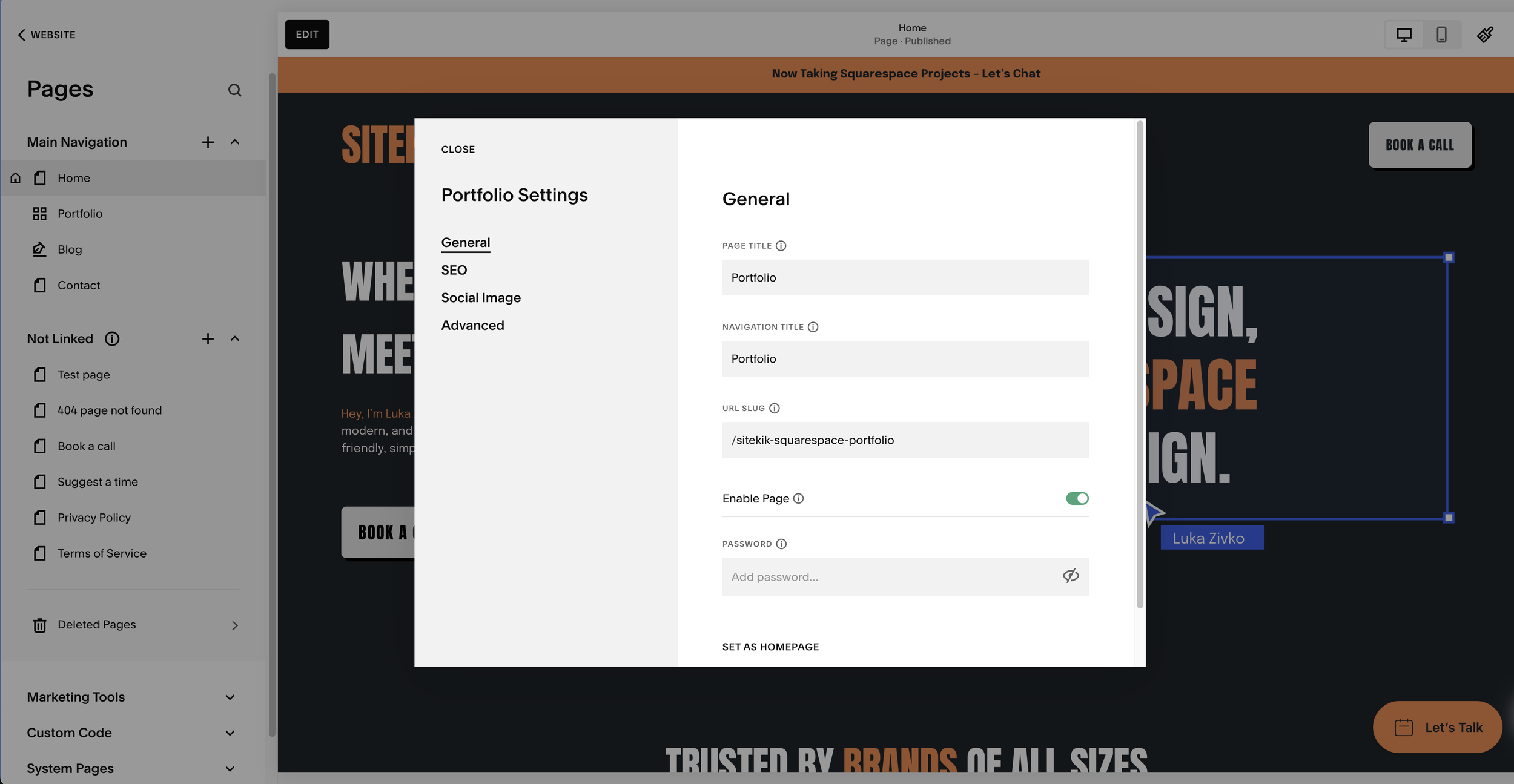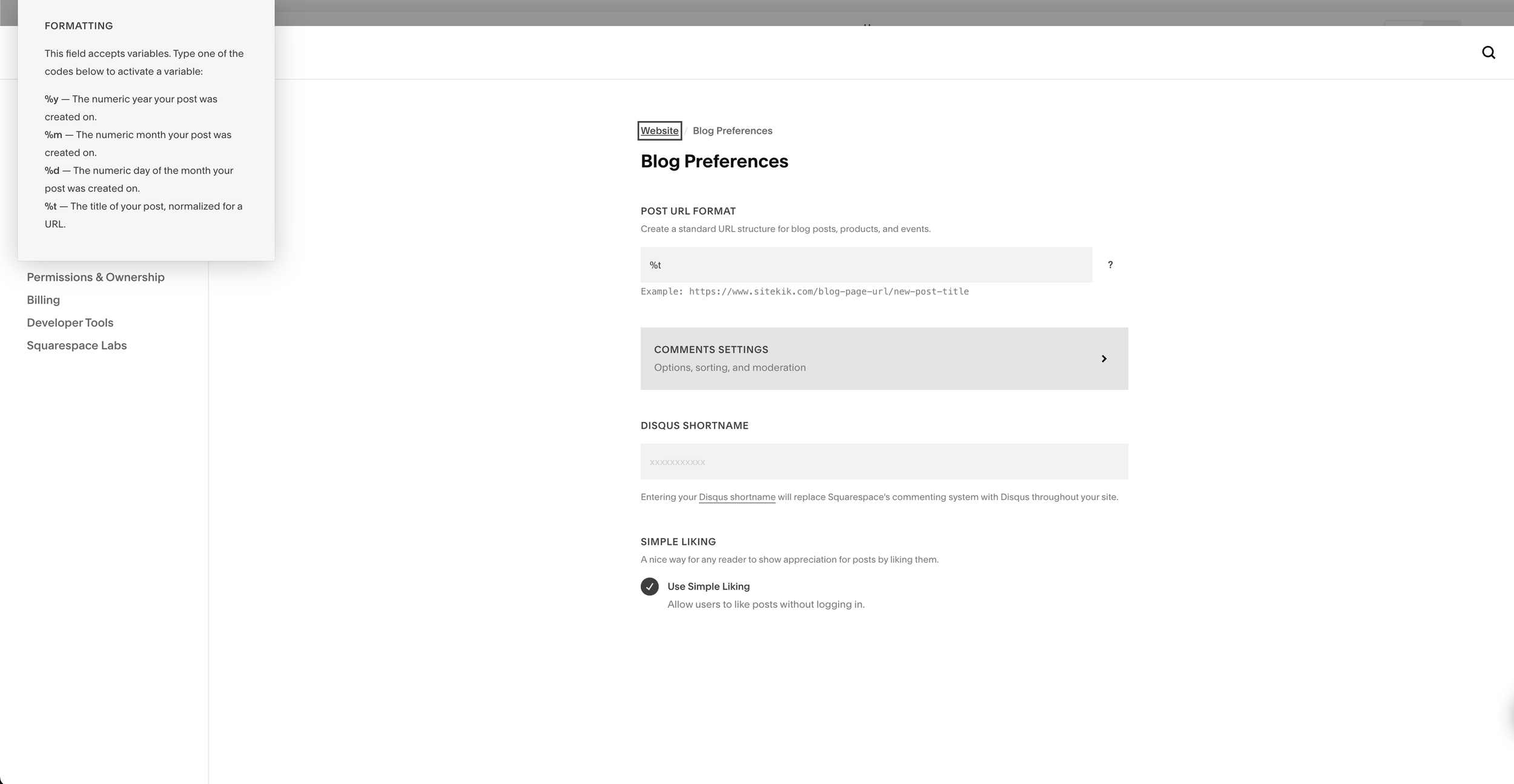Squarespace URL Slugs : A Beginner’s Guide to SEO
Have you ever noticed a page on your site showing up as /about-1 or /new-page? It doesn’t look professional, and worse — it can confuse both visitors and search engines.
On Squarespace, these are called URL slugs. They’re automatically generated, but if you don’t take the time to edit them, you could be missing out on small but important SEO improvements.
In this beginner’s guide, I’ll walk you through what URL slugs are, why they matter, and how to make them work in your favor.
By the end, you’ll know how to keep your links clean, easy to read, and SEO-friendly. And if you’d like to see this in action, check out my Squarespace homepage where I use optimized slugs across the site.
What Are URL Slugs in Squarespace?
A URL slug is simply the part of your web address that comes after your domain name.
Example: www.yoursite.com/**about** → “about” is the slug.
Squarespace will automatically create a slug based on your page or post title. So if you name a page About Me, your slug will likely become /about-me.
The problem is when slugs are left as defaults from testing or duplicating pages, you might see something like:
/about-1
/test-page
/new-page
These don’t help with SEO, and they definitely don’t look professional.
Why URL Slugs Matter for SEO
URL slugs might be small, but they do make a difference:
✅ Clearer for visitors: Easy-to-read slugs build trust and make sharing links simple.
✅ Keyword relevance: A slug like /squarespace-portfolio tells Google (and your audience) exactly what to expect.
✅ Consistency: Clean slugs keep your site looking polished and organized.
For example, I’ve structured my own Squarespace portfolio page
to use a direct, keyword-friendly slug — no random numbers or filler words.
How to Edit URL Slugs in Squarespace
Editing slugs is straightforward:
Go to your page or blog post.
Open Settings → General.
Find the URL Slug field.
Enter a short, descriptive slug.
Save changes.
💡 Pro Tip: Your navigation title, page title, and slug don’t have to match.
Navigation title: “Work”
Page title: “Squarespace Portfolio”
URL slug: /squarespace-portfolio
This way, your navigation stays clean while your slug helps with SEO.
Blog Post URL Format Options
Squarespace also gives you control over how blog post slugs are structured. You can:
Keep it simple: /blog/post-title
Add dates: /blog/2025/09/28/post-title
Customize with text: /blog/my-cool-post-title
To change the format:
Go to Settings → Blog Preferences → Post URL Format.
Use placeholders:
%y = Year
%m = Month
%d = Day
%t = Title
For example:
Default: /blog/%t
Full date: /blog/%y%m%d%t
👉 My recommendation? Keep it clean and focused on the title unless dates are truly important for your niche.
Common Mistakes to Avoid
❌ Leaving default slugs like /new-page or /about-1.
❌ Making slugs too long or keyword-stuffed.
❌ Using symbols or uppercase letters (keep it lowercase and hyphenated).
❌ Forgetting to check slug consistency before publishing.
Conclusion
URL slugs are one of those little details that make your site feel professional and SEO-ready. By taking a few minutes to clean them up, you improve readability, build trust, and give Google more context about your content.
👉 Want to see optimized slugs in action? Visit my homepage or explore my Squarespace portfolio.
Next step: Once you start editing slugs, you’ll need to know how to handle changes without breaking links. That’s where 301 redirects and custom 404 pages come in — and I’ve covered those in detail in my next guide.
FAQ
-
No. If you rename a page, the slug stays the same unless you manually edit it.
-
They’re not directly harmful, but shorter, descriptive slugs are easier to read and rank better.
-
Yes. In fact, it’s often better to keep navigation short while making the slug keyword-rich.


